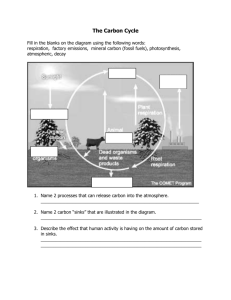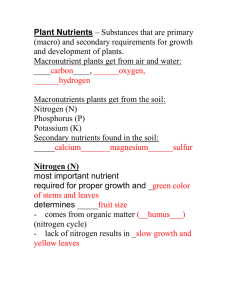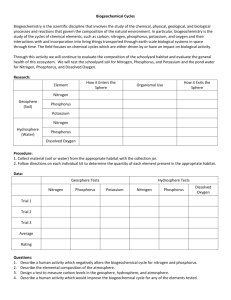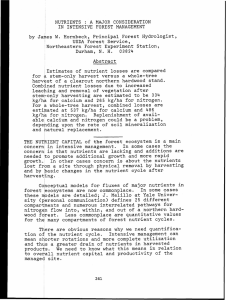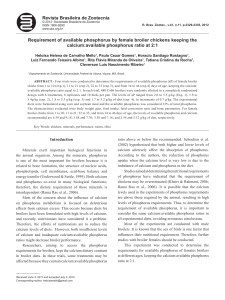Master Gardener Handbook Quiz on Chapter 5: Plant Nutrition Questions
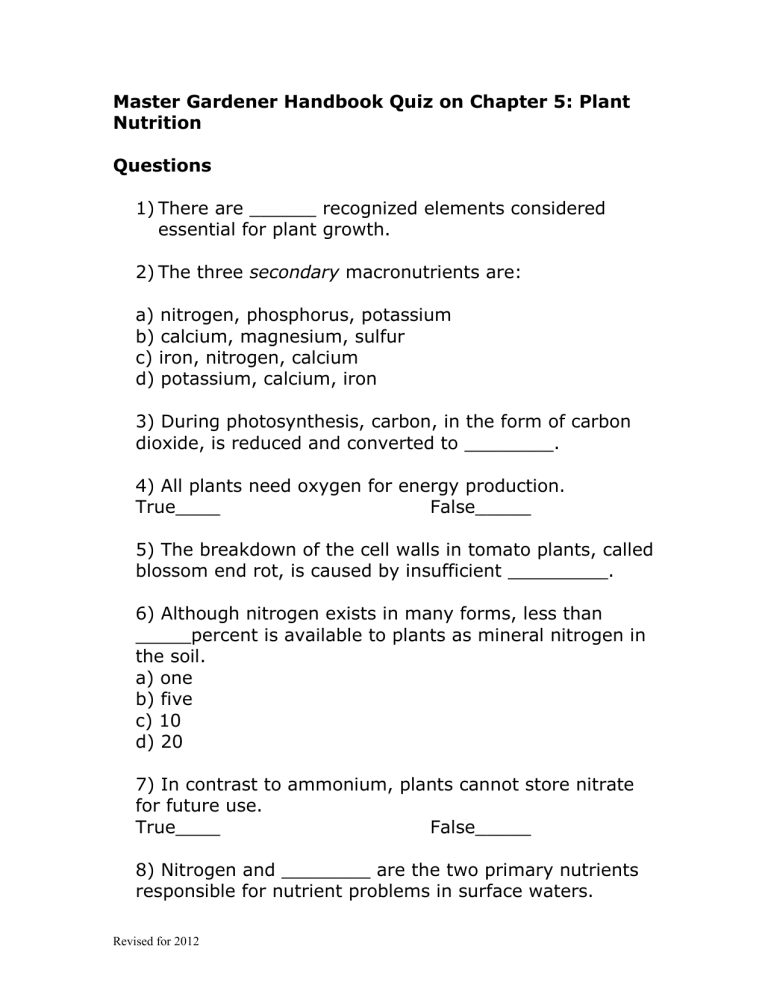
Master Gardener Handbook Quiz on Chapter 5: Plant
Nutrition
Questions
1) There are ______ recognized elements considered essential for plant growth.
2) The three secondary macronutrients are: a) nitrogen, phosphorus, potassium b) calcium, magnesium, sulfur c) iron, nitrogen, calcium d) potassium, calcium, iron
3) During photosynthesis, carbon, in the form of carbon dioxide, is reduced and converted to ________.
4) All plants need oxygen for energy production.
True____ False_____
5) The breakdown of the cell walls in tomato plants, called blossom end rot, is caused by insufficient _________.
6) Although nitrogen exists in many forms, less than
_____percent is available to plants as mineral nitrogen in the soil. a) one b) five c) 10 d) 20
7) In contrast to ammonium, plants cannot store nitrate for future use.
True____ False_____
8) Nitrogen and ________ are the two primary nutrients responsible for nutrient problems in surface waters.
Revised for 2012
9) Phosphorus is most available to plants between the pH of 5.5 and ______.
10) In the United States, phosphorus in fertilizers is expressed as phosphate.
True____ False___
11) Scorch is a major symptom of _____ deficiency.
12) Boron toxicity is characterized by (choose the
INCORRECT answer): a) yellowing of leaf tips b) leaf margin scorching c) stunted growth d) interveinal chlorosis
13) Unlike many micronutrients, molybdenum becomes more available in lower pH soils.
True____ False___
14) Zinc is the newest recognized essential plant nutrient.
True____ False______
15) Next to oxygen, _____ is the most abundant element in soil.
Answers on next page
Revised for 2012
Master Gardener Handbook Chapter 5
Answers
1) 17
Page in Handbook
73
2) b. (calcium, magnesium, sulfur) 74
3) carbohydrates
4) False (Anaerobes use other methods, like
74 fermentation, for energy production.) 74
5) calcium
6) a. one percent
75
75
7) False (Plants cannot store ammonium.) 75
8) phosphorus 76
76 9) 7
10) True
11) potassium
12) c. stunted growth
13) False (higher pH soils)
76
77
78
79
14) False (nickel)
15) silicon
79
80
Revised for 2012


